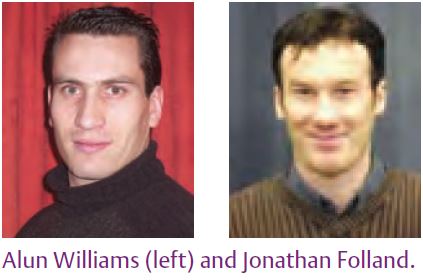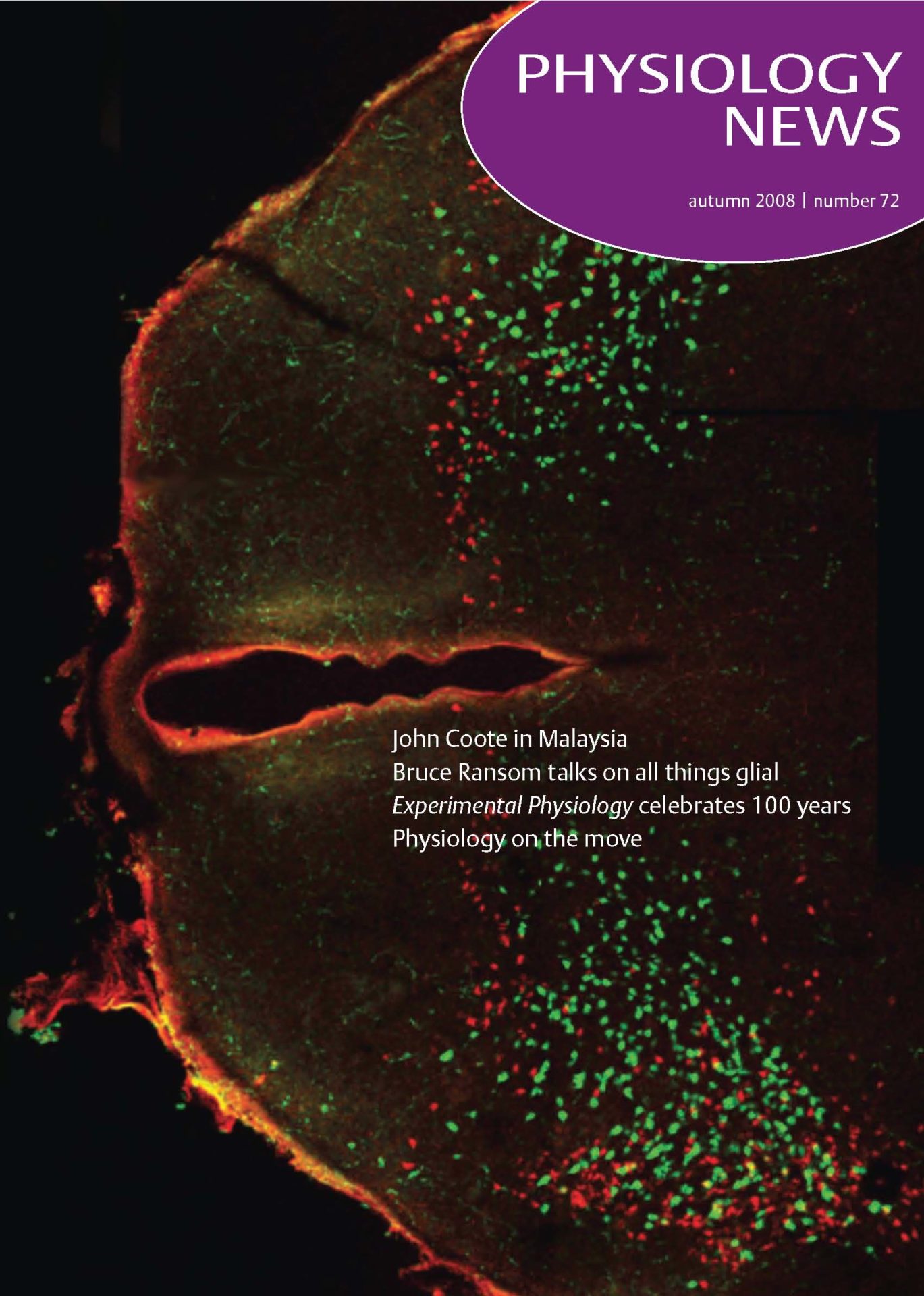
Physiology News Magazine
Sport genetics: physical performance potential is dependent on genome
Gene association and case-control studies have linked certain genetic variants with physiological performance traits in humans. Our personal athletic potential depends on our genotype, while how close we get to achieving our personal potential depends on environmental factors (training, diet, lifestyle, etc.). In fact, the complexity of the human genome limits our personal athletic potential more than was appreciated previously
Features
Sport genetics: physical performance potential is dependent on genome
Gene association and case-control studies have linked certain genetic variants with physiological performance traits in humans. Our personal athletic potential depends on our genotype, while how close we get to achieving our personal potential depends on environmental factors (training, diet, lifestyle, etc.). In fact, the complexity of the human genome limits our personal athletic potential more than was appreciated previously
Features
Alun G Williams (1) & Jonathan P Folland (2)
1: Manchester Metropolitan University, Alsager
2: Loughborough University, Loughborough, UK
https://doi.org/10.36866/pn.72.30

In exercise physiology, we have traditionally been interested in topics such as training methods and diet and how these alter physiological function. However, twin and family studies have shown that these environmental factors probably only determine around 50%of the variability in key aspects of exercise physiology like muscle strength, fibre type and maximal oxygen uptake (Spurway & Wackerhage, 2006). For the other 50% of the variability in these phenotypes, we need to consider hereditary, genetic factors (Fig. 1). The 50% value is a generalisation because it depends on which exercise-related phenotype is being considered, but it is remarkable how often the extent of genetic influence seems to be around the 50% mark. Building upon the mass of information revealed by the Human Genome Project and associated advances in the ease and sophistication of molecular genetic techniques, advances are now being made in our understanding of the genetic factors that influence physical capability.

Some genes have been associated with physical capability in the untrained state. For example, a polymorphism of the CNTF gene (ciliary neurotrophic factor; a protein related to differentiation and survival of motor neurones, and intracellular signalling pathways in muscle) was associated with muscle mass and strength in a cross-sectional study of a non-athletic population (Roth et al. 2001).
There are also gene-environment interactions that at least partially explain the differences between individuals in their response to training. For example, a variant of the ACE gene (angiotensin I converting enzyme 1) has been associated with a reduced oxygen requirement for exercise following several weeks of training (Williams et al. 2000) and with endurance performance in hypoxia in several studies. Other genetic polymorph-isms have been associated directly with elite athlete status (rather than a distinct physiological phenotype per se), conferring an advantage either independent of physical training or via a gene-environment interaction. For example, a polymorphism of the ACTN3 gene (actinin alpha 3; a protein found in the Z line of human muscle fibres that may play structural and signalling roles) has been associated with high achievement in power sports (Yang et al. 2003) and muscle fibre type composition (Vincent et al. 2007). Many of us will have memories of perhaps being at school and noticing that classmates seem extraordinarily ‘naturally’ talented at athletic events. Perhaps a few readers will have memories of actually being those physically talented individuals – that is, more ‘ naturally’ talented than their peers. It is likely that genetic variation at loci such as CNTF, ACE or ACTN3 played a role in producing those differences.
A combinatory approach
However, each genetic polymorphism only seems to account for a few per cent (at best) of the inter-individual variation in physical capability. A rare attempt to recognise the contribution of two related polymorphisms in a single study (FST and ACVR2B; follistatin and activin A receptor type IIB, a myostatin antagonist and the primary myostatin receptor gene, respectively) illustrates the direction of future research, although statistical powering issues prevented an analysis of both polymorphisms simultaneously (Walsh et al. 2007). A true attempt to recognise the combined contribution of two polymorphisms (ACE and BDKRB2 [bradykinin receptor B2]; both related to kinin metabolism and hence nitric oxide production) did indeed better discriminate between individuals’ oxygen requirement during exercise than when considering just one gene in isolation (Williams et al. 2004).
Accordingly, to gain a more complete picture of the genetic factors that account for around 50%of the variability in physical capability, a model is required that recognises the contribution of each gene, gene-environment and gene-gene interaction in making a complete exercising athlete. In a recent analysis we produced the first genetic algorithm for human endurance performance. Using literature searching and specific inclusion criteria, 23 genetic polymorphisms were identified and included in the algorithm (Williams & Folland, 2008). Some of the polymorphisms included were associated with endurance characteristics independent of training, others with the magnitude of the training response and still others were identified via case-control studies between elite athletes and healthy controls. The polymorphisms were typically located within genes coding for muscle structural proteins, enzymes involved in energy metabolism and mitochondrial function (including some of those genes already mentioned in the current article). By definition, the algorithm takes into account the influence of many genes simultaneously.
Genetic ‘perfection’ for sport is highly improbable
Based on the typical frequencies of the 23 polymorphisms in the wider population and using the genetic algorithm, we calculated the probability of any given individual possessing all 23 ‘preferable ’ genotypes is just 8.2 x 10-14 %, an enormous odds ratio of 1 in 1,212 trillion. This equates to just a 1 in 200,000 chance that a single individual exists in the world (~6.5 billion population) possessing the ‘preferable’ form of all 23 polymorphisms. Even allowing a couple of ‘disadvantageous ’ genotypes within the 23, the data suggest just a 10% chance that an individual exists anywhere with 21 of the 23 ‘preferable’ genotypes. Fig. 2 shows how these data translate into population sizes. In essence, the complexity of the human genome combined with interindividual genetic variability, appear to limit our physical performance potential due to the improbability of possessing the ‘preferable’ version of each important gene. This may explain the fastest possible time predicted for a marathon of 1:57:58 (Joyner, 1991) has not yet been achieved. Presumably, we are still waiting for an individual to have both a suitable upbringing (opportunity and inclination for sport) and DNA containing the suitable versions of the important genes. We will have to wait an extremely long time for such an individual to be born – at least, in the absence of deliberate genetic manipulation, which is quite another story.

There are several limitations to the algorithm. First, it is based on data from Caucasians only, because this ethnic group alone has been studied sufficiently. Second, research into the genetics of physical performance is still in its infancy and further replication of published associations will increase confidence. Third, further gene polymorphisms will inevitably be associated with endurance parameters as our understanding improves. Consequently, the genetic algorithm proposed can be thought of as ‘Endurance Algorithm version 1.0’. It will certainly need upgrading as knowledge develops. Perhaps it will be version 4.3 or later before the algorithm includes sufficient statistically important information to become practically useful either in identifying physical prowess and talent for sport or low physical capacity and propensity for ill-health.
The algorithm provides a ‘total genotype score’ (TGS) between 0-100 that indicates an individual’s genetic predisposition for endurance performance, where a higher score is better for endurance. We calculate that 99% of people have a TGS within the range 37–65. Perhaps individuals with a TGS >65 or so could be identified as potential future elite athletes and selected for intensive training. Similarly, individuals could be identified for whom low physical capacity may contribute to poor health. Individuals could be identified for whom exercise for health is likely to prove particularly effective, while others could be identified for whom drugs to prevent/treat a particular condition may be warranted in addition to exercise. This is how ‘personalised medicine’ may interface with sport and exercise genetics in the future.
References
Joyner MJ (1991). Modeling: optimal marathon performance on the basis of physiological factors. J Appl Physiol 70, 683–687.
Roth SM, Schrager MA, Ferrell RE, Riechman SE, Metter EJ, Lynch NA, Lindle RS & Hurley BF (2001). CNTF genotype is associated with muscular strength and quality in humans across the adult age span. J Appl Physiol 90, 1205–1210.
Spurway N & Wackerhage H (2006). Genetics and molecular biology of muscle adaptation. Churchill Livingstone Elsevier, London.
Vincent B, De Bock K, Ramaekers M, Van den Eede E, Van Leemputte M, Hespel PJ & Thomis M (2007). The ACTN3 (R577X) genotype is associated with fiber type distribution. Physiol Genomics 32, 58–63.
Walsh S, Metter EJ, Ferrucci L & Roth SM (2007). Activin-type II receptor B (ACVR2B) and follistatin haplotype associations with muscle mass and strength in humans. J Appl Physiol 102, 2142–2148.
Williams AG, Dhamrait SS, Wootton PTE, Day SH, Hawe E, Payne JR, Myerson SG, World M, Budgett R, Humphries SE & Montgomery HE (2004). Bradykinin receptor gene variant and human physical performance. J Appl Physiol 96, 938–942.
Williams AG & Folland JP (2008). Similarity of polygenic profiles limits the potential for elite human physical performance. J Physiol 586, 113–121.
Williams AG, Rayson MP, Jubb M, World M, Woods DR, Hayward M, Martin J, Humphries SE & Montgomery HE (2000). The ACE gene and muscle performance. Nature 403, 614.
Yang N, MacArthur DG, Gulbin JP, Hahn AG, Beggs AH, Easteal S & North K (2003). ACTN3 genotype is associated with human elite athletic performance. Am J Hum Genet 73, 627–631.
